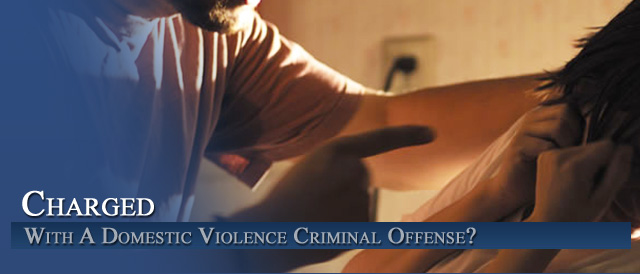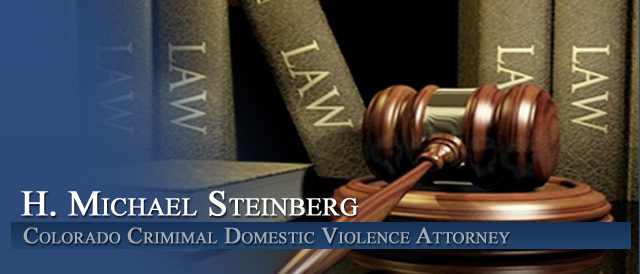




Federal Enforcement of Domestic Violence Protection Orders
Colorado Criminal aw: Syndrome Evidence: How and Why It Is Used in Domestic Violence Cases
It may be admissible against the accused
A new strategy is being urged by the state in domestic violence cases, particularly when the alleged victim has recanted or changed her story. The prosecutors are borrowing concepts from child sexual assault cases and attempting to expand them to family violence cases. In many states, prosecutors in child abuse cases can offer expert testimony that a child is suffering from the Child Sexual Abuse Accommodation Syndrome (C.S.A.A.S.). This syndrome is based on the theory that abused children will exhibit certain character traits indicative of abuse.
Prosecutors in adult domestic assault cases are now attempting to show a victim who recants or changes her original story is suffering from Battered Woman’s Syndrome. The new prosecutorial trend is to use the syndrome to explain why a victim of domestic violence would recant. The state wants the jury to hear expert testimony explaining that a victim is likely to recant, not due to the absence of violence, but because she is a battered woman.
“Battered Woman Syndrome describes a pattern of psychological and behavioral symptoms found in women living in battering relationships.” People v. Romero, 13 Cal Rptr 2d 332, 336 (Cal App 2d Dist. 1992). The nation’s leading expert on the syndrome, Dr. Lenore Walker, states in her book The Battered Woman Syndrome that there are four general characteristics of the syndrome:
1. The woman believes that the violence was her fault.
2. The woman has an inability to place the responsibility for the violence elsewhere.
3. The woman fears for her life and/or her children’s lives.
4. The woman has an irrational belief that the abuser is omnipresent and omniscient.
Walker found nine typical characteristics of the battered wife:
(1) Has low self-esteem;
(2) Believes all the myths about battering relationships;
(3) Is a traditionalist about the home, strongly believes in family unity and the prescribed feminine sex-role stereotype;
(4) Accepts responsibility for the batterer’s actions;
(5) Suffers from guilt, yet denies the terror and anger she feels;
(6) Presents a passive face to the world but has the strength to manipulate her environment enough to prevent further violence and being killed;
(7) Has severe stress reactions, with psycho-physiological complaints;
(8) Uses sex as a way to establish intimacy; and
(9) Believes that no one will be able to help her resolve her predicament except herself.
Slowly the syndrome is appearing in domestic violence courts throughout the country as a means to strengthen the state’s case against the accused. The majority of courts are disallowing expert testimony without specific proof the victim in that case suffers from the syndrome. However, it is anticipated this syndrome will soon gain the same status as C.S.A.A.S. and become a routine prosecutorial tactic against defendants in domestic violence cases.
With syndrome evidence, the state replaces its lack of real proof with speculation. Expert testimony stating the wife is a battered woman can be fatal to the falsely accused. A wife testifying for the defendant describing the incident may tell the jury she exaggerated or was the instigator herself. The prosecution in rebuttal will call an expert witness to inform the jury that she is testifying in a manner consistent with being a battered spouse and merely protecting her husband or lover.
A variety of state law cases indicate this prosecutorial trend seeking to introduce evidence the victim belongs to the class of persons known as “Battered Woman’s Syndrome” is spreading:
1. Russell v. State, Court of Appeals of Alaska, 2002 Alas. App. LEXIS 237, (2002) (Memorandum decision, not legal precedent);2. People v. Williams, Court of Appeal of California, Second Appellate District, Division Four, 78 Cal. App. 4th 1118; 93 Cal. Rptr. 2d 356; 3. State v. Yusuf, Appellate Court of Connecticut, 70 Conn. App. 594; 800 A.2d 590; 2002 Conn. App. LEXIS 349 (2002); 4. State v. Niemeyer, Appellate Court of Connecticut, 55 Conn. App. 447; 740 A.2d 416; 1999 Conn. App. LEXIS 408 (1999); 5. Michigan v. Christel, 449 Mich. 578, 537 N.W.2d 194, 1995 Mich. LEXIS 1477; 6. State v. Cummings, Court of Appeals of Ohio, Eighth Appellate District, 2002 Ohio 4178; 2002 Ohio App. LEXIS 4353 (2002); 7. Garcia v. State, NO. 01-99-01068-CR, Court of Appeals of Texas, First District, Houston, 2000 Tex. App. LEXIS 3774, (2000)(Unpublished, not legal precedent).
Other Articles of Interest:
- Colorado Domestic Violence Permanent Civil Protection Order Laws – Title 13 and 18
- Federal Domestic Violence Laws – VAWAs Impact on Colorado Domestic Violence Cases
- FAQ: Colorado Criminal Law: Understanding the Impact of FEDERAL FIREARMS LAWS AND BRADY FINDINGS in Colorado Domestic Violence Cases
- Lifting Or Modifying Colorado Civil Restraining – Protection Orders Pursuant to C.R.S. 13-14-108
- Colorado Criminal Domestic Violence Laws – Firearms and Domestic Violence Cases












